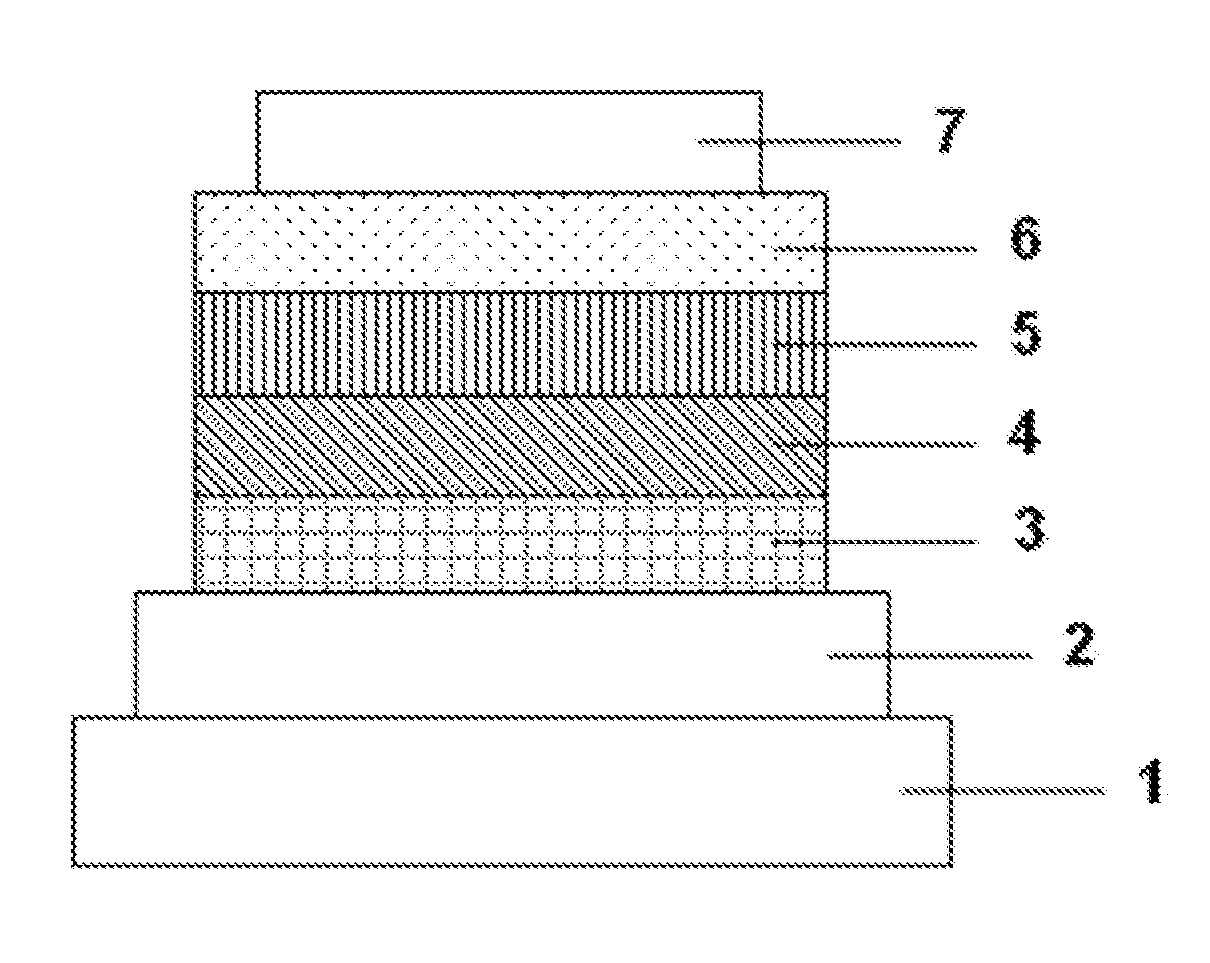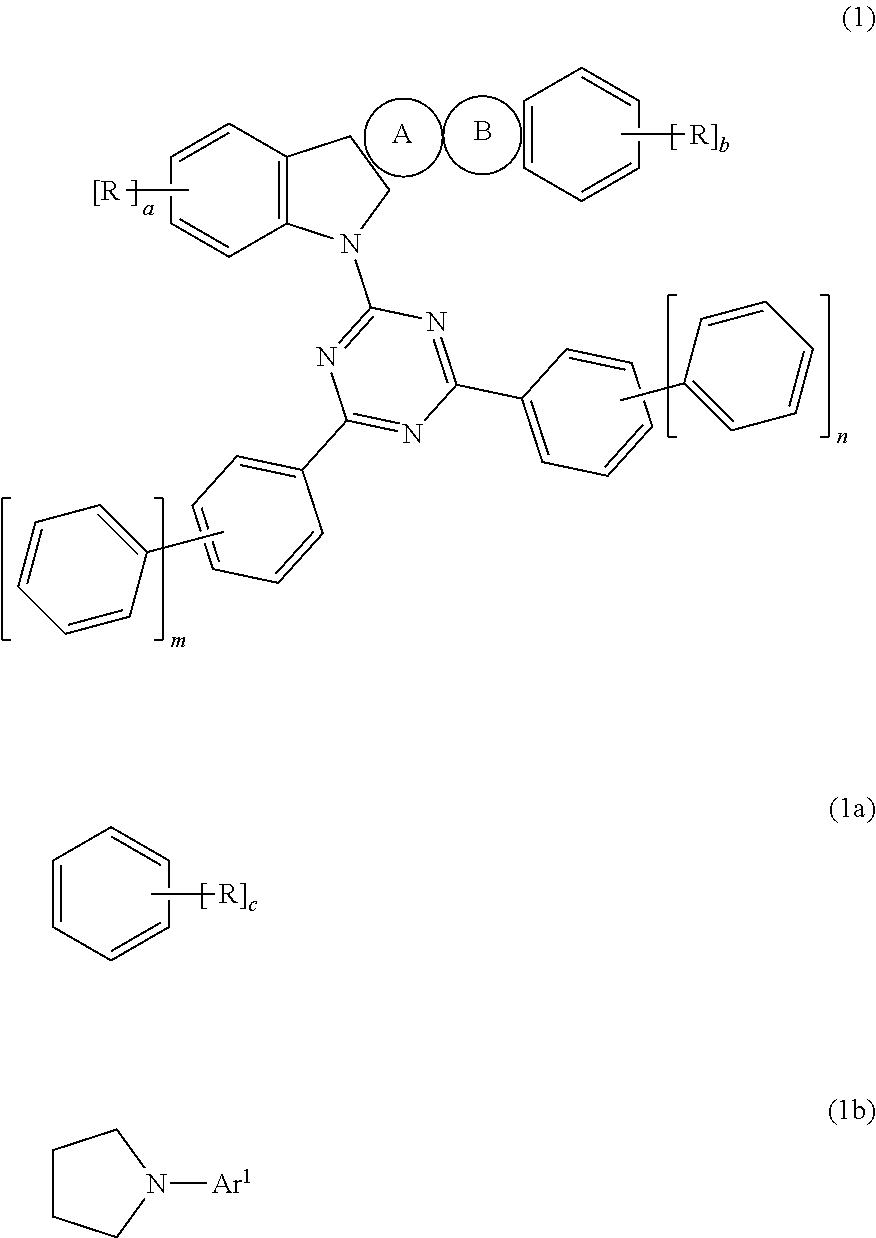Organic electroluminescent element
a technology of electroluminescent elements and organic el, which is applied in the direction of organic chemistry, luminescent compositions, semiconductor devices, etc., can solve the problems of increasing the lifetime of phosphorescent emission-type organic el devices, and achieves the effects of low driving voltage, long lifetime and high luminous efficiency
- Summary
- Abstract
- Description
- Claims
- Application Information
AI Technical Summary
Benefits of technology
Problems solved by technology
Method used
Image
Examples
example 1
[0099]Each thin film was laminated on a glass substrate having formed thereon an anode formed of ITO having a thickness of 110 nm by a vacuum deposition method at a degree of vacuum of 4.0×10−5 Pa. First, HAT-CN serving as a hole-injecting layer was formed on ITO so as to have a thickness of 25 nm, and then NPD serving as a hole-transporting layer was formed so as to have a thickness of 30 nm. Next, HT-1 serving as an electron-blocking layer was formed so as to have a thickness of 10 nm. Then, the preliminary mixture HI serving as a host and Ir(ppy)3 serving as a light-emitting dopant were respectively co-deposited from different deposition sources to form a light-emitting layer having a thickness of 40 nm. At this time, the co-deposition was performed under such a deposition condition that the concentration of Ir(ppy)3 became 10 wt %. Next, ET-1 serving as an electron-transporting layer was formed so as to have a thickness of 20 nm. Further, lithium fluoride (LiF) serving as an ele...
examples 2 to 9
[0100]Organic EL devices were each produced in the same manner as in Example 1 except that in Example 1, any one of the preliminary mixtures H2 to H9 was used, as a host.
example 10
[0101]An organic EL device was produced in the same manner as in Example 3 except that in Example 3, after the formation of the light-emitting layer, Compound 1-8 serving as a hole-blocking layer was formed so as to have a thickness of 10 nm, and ET-1 serving as an electron-transporting layer was formed so as to have a thickness of 10 nm.
PUM
| Property | Measurement | Unit |
|---|---|---|
| temperature | aaaaa | aaaaa |
| internal quantum efficiency | aaaaa | aaaaa |
| internal quantum efficiency | aaaaa | aaaaa |
Abstract
Description
Claims
Application Information
 Login to View More
Login to View More - R&D
- Intellectual Property
- Life Sciences
- Materials
- Tech Scout
- Unparalleled Data Quality
- Higher Quality Content
- 60% Fewer Hallucinations
Browse by: Latest US Patents, China's latest patents, Technical Efficacy Thesaurus, Application Domain, Technology Topic, Popular Technical Reports.
© 2025 PatSnap. All rights reserved.Legal|Privacy policy|Modern Slavery Act Transparency Statement|Sitemap|About US| Contact US: help@patsnap.com



